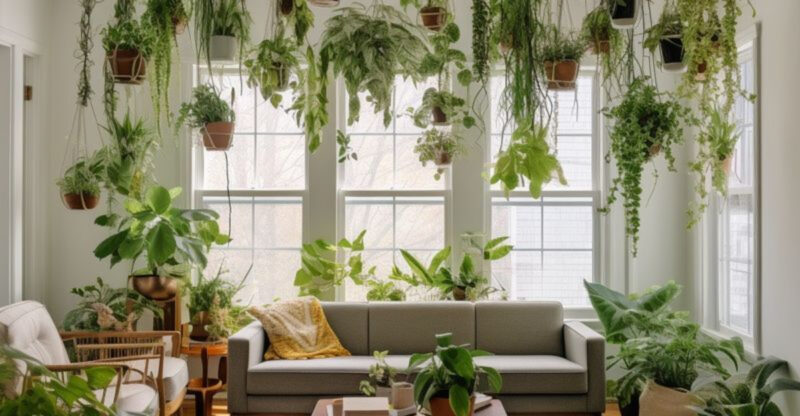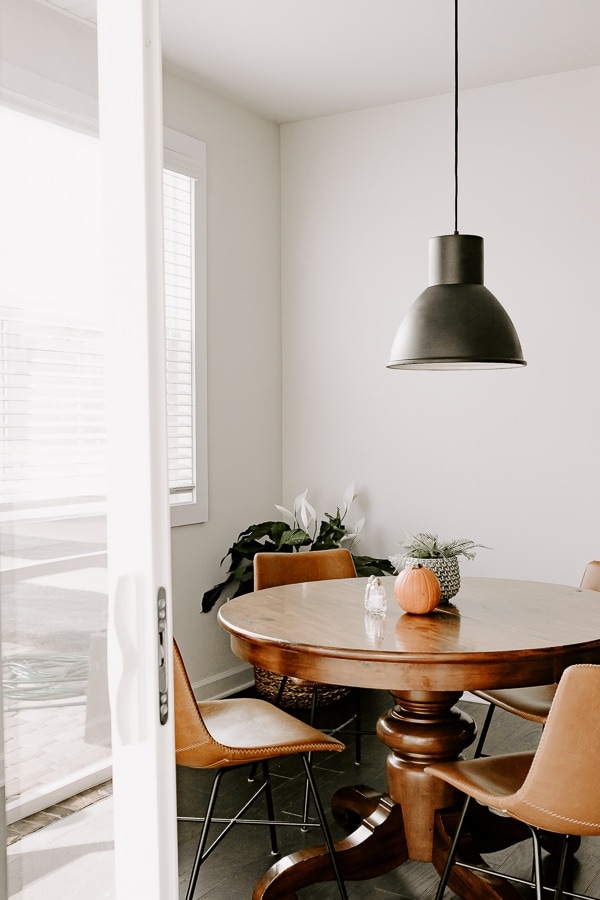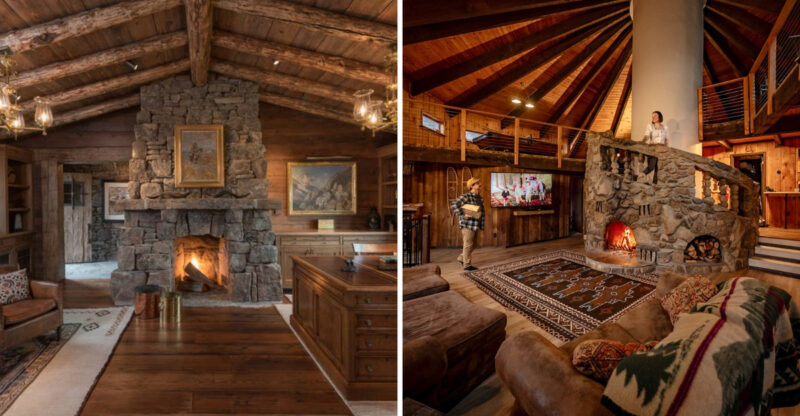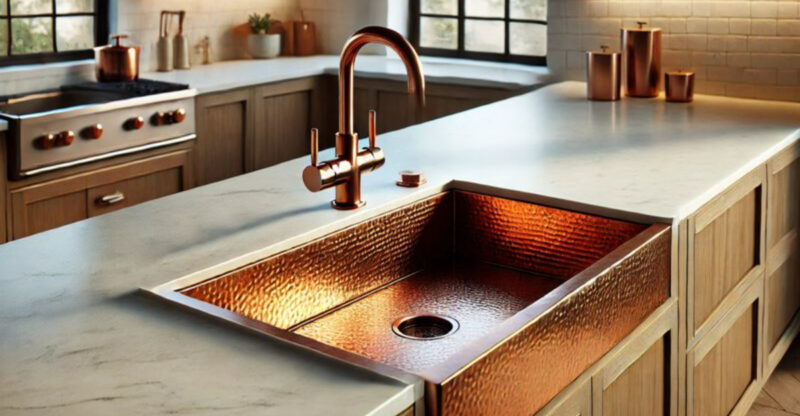18 Reasons Your Living Room Feels Smaller Than It Is, According To Designers
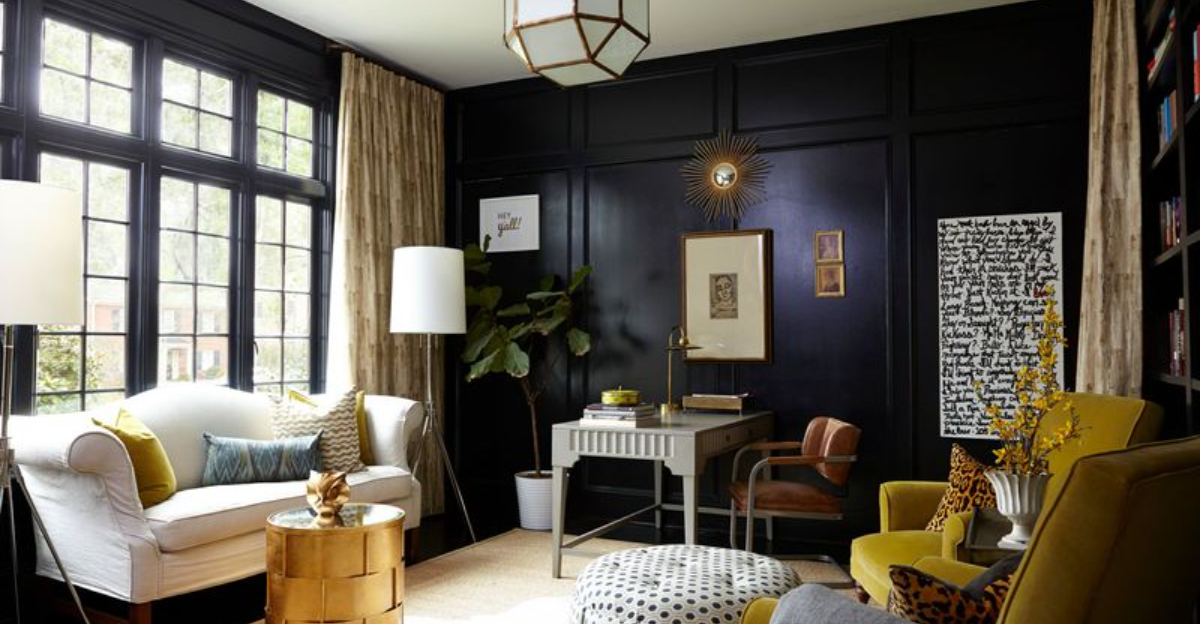
Ever walk into your living room and feel like the walls are closing in, even though the space itself isn’t small? You’re not imagining it. Designers point to plenty of sneaky design choices that can make a perfectly good-sized room feel cramped and crowded.
From bulky furniture to dark paint colors, subtle details often steal square footage – and comfort – without warning. Understanding these common mistakes can help transform your living room into the open, inviting space it’s meant to be.
1. Oversized Furniture
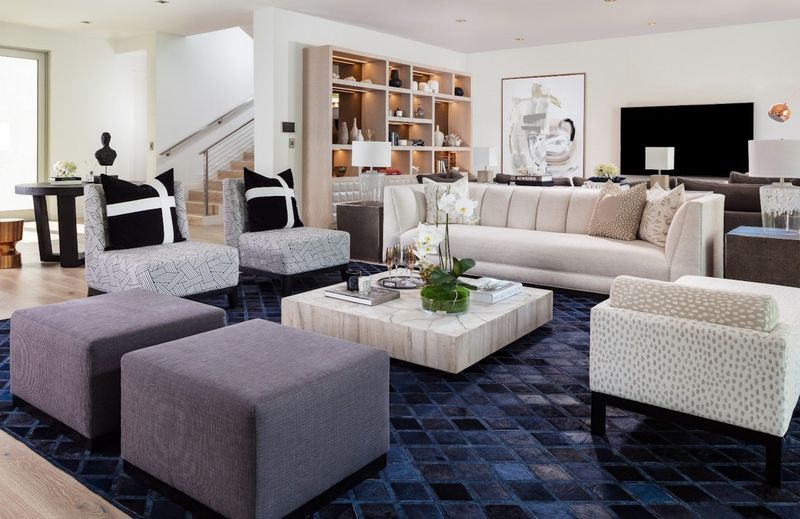
That massive sectional sofa might be comfy for movie nights, but it’s eating up precious floor space. Oversized furniture creates an immediate sense of crowding.
Choose pieces that fit your room’s proportions instead. Furniture with visible legs allows sight lines underneath, creating an airy feel that makes the entire space breathe better.
2. Too Many Decorative Accessories
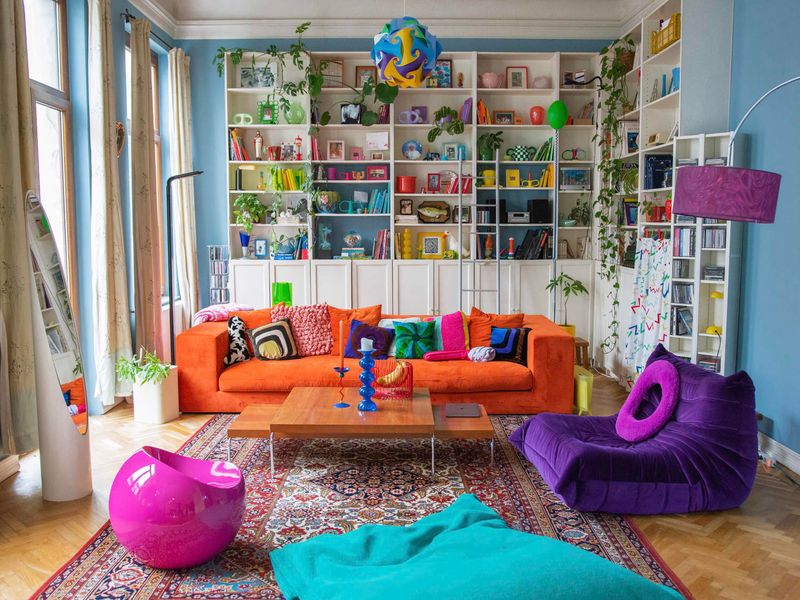
Your collection of trinkets tells your story, but too many small items create visual clutter that overwhelms the eye. Each little object demands attention and makes the space feel busy.
Try curating your accessories down to meaningful favorites. Grouping similar items together creates intentional displays rather than random clutter, allowing the room to feel more spacious and purposeful.
3. Bulky Window Treatments
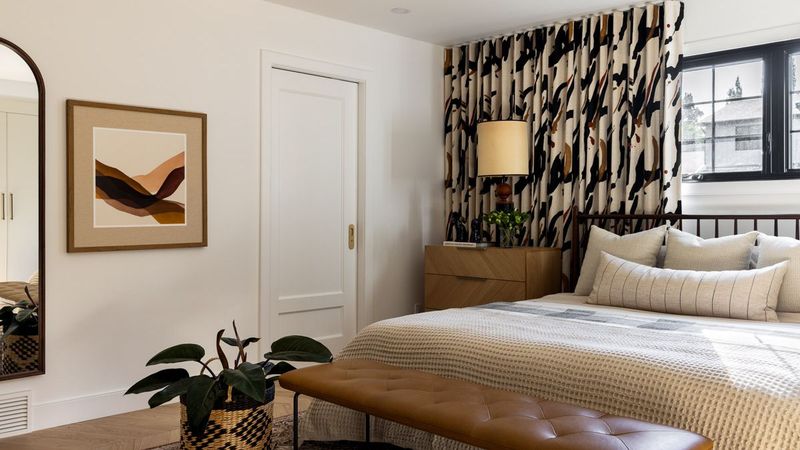
Heavy drapes with thick valances might seem luxurious but they’re blocking precious natural light and adding visual weight. When fabric overwhelms window frames, the whole room suffers.
Consider streamlined options like simple panels or roller blinds. Window treatments that allow maximum light penetration while still providing privacy will instantly make your living room feel more open and connected to the outdoors.
4. Cluttered Coffee Table
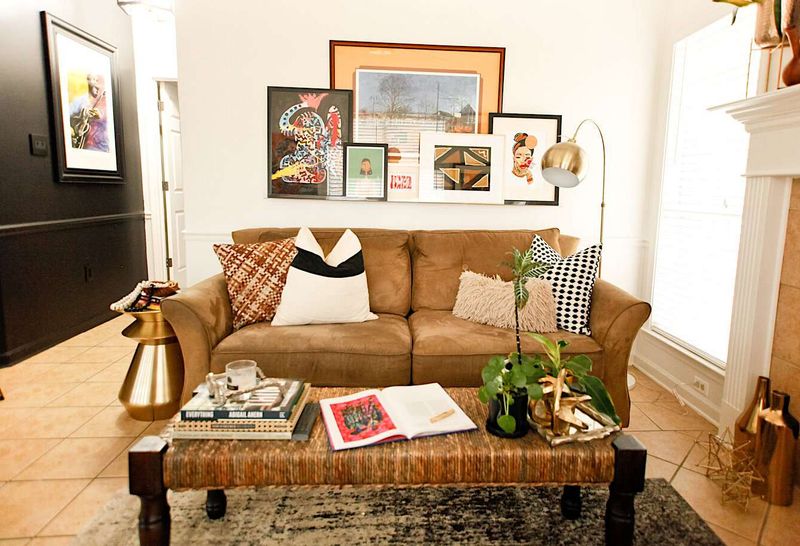
Books, remotes, decorative objects, and yesterday’s coffee mug are creating a visual traffic jam right in the center of your room. This central surface sets the tone for the entire space.
A coffee table should maintain about 50% clear space to feel balanced. Try using decorative boxes or baskets to corral small items, and limit displayed objects to just a few statement pieces.
5. Excessive Throw Pillows
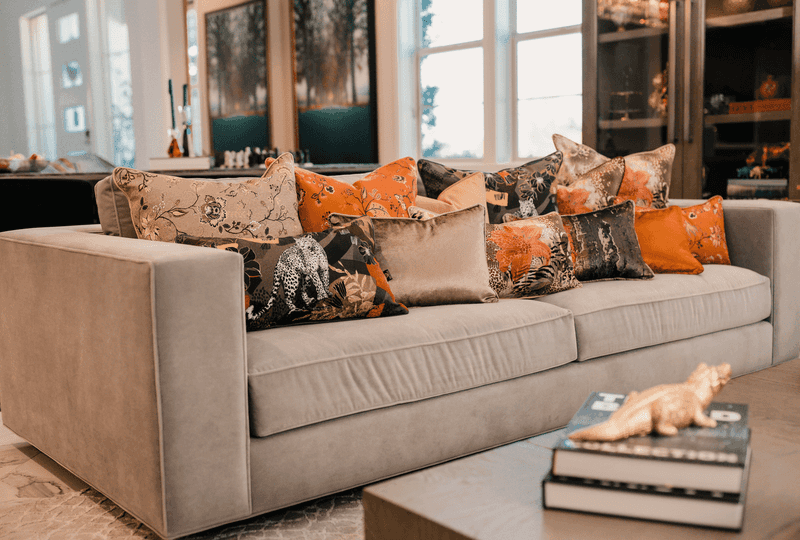
A mountain of decorative cushions might seem cozy but they’re actually consuming valuable seating space. When pillows take up more room than people can, something’s off balance.
Limit throw pillows to 2-3 per sofa and 1-2 for chairs. Quality over quantity applies here – a few well-chosen pillows add color and texture without overwhelming your furniture or forcing guests to toss them aside.
6. Overfilled Shelving
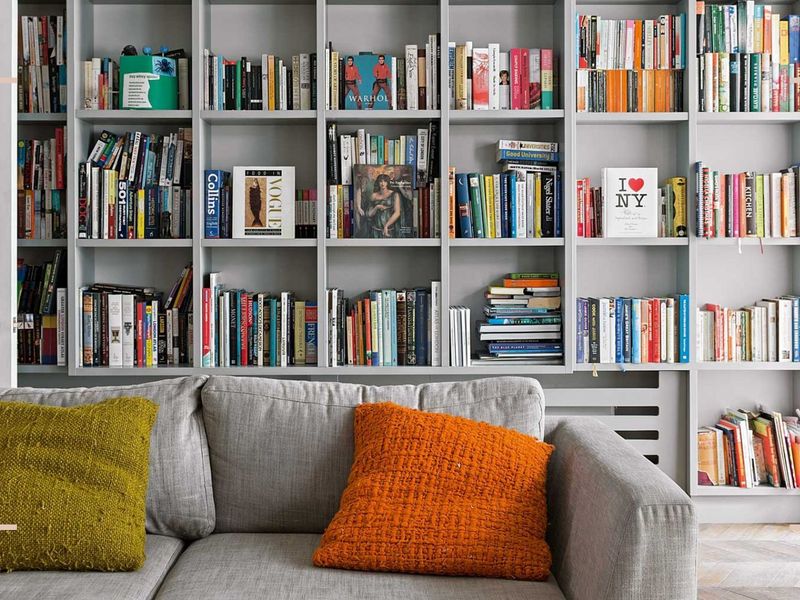
When bookcases are packed to bursting, they create visual heaviness that weighs down the entire room. The eye needs places to rest between objects.
Allow breathing room between items on shelves. Organizing books both vertically and horizontally with occasional open spaces creates rhythm. This approach to shelving lets the wall behind peek through, creating depth instead of a solid wall of stuff.
7. Large Entertainment Centers
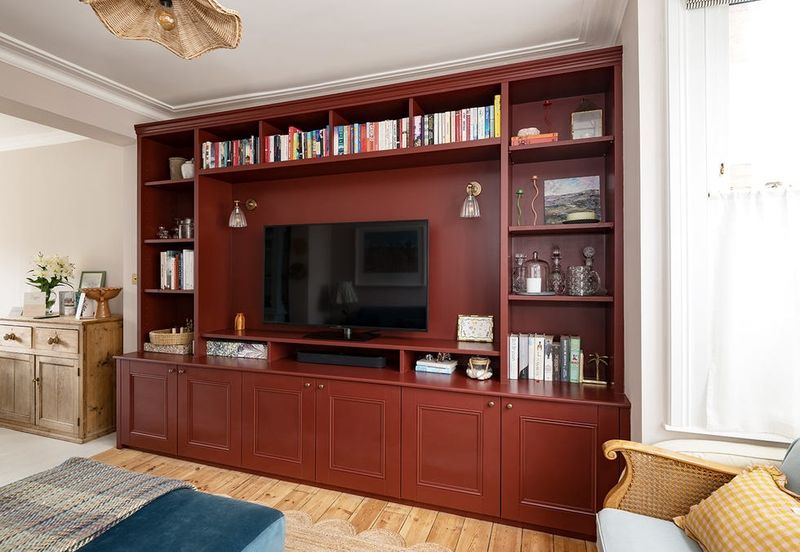
Massive wall units from the 1990s create the visual equivalent of a black hole in your living room. These furniture dinosaurs dominate walls and make everything else feel squished.
Consider wall-mounting your TV with minimal floating shelves beneath. Entertainment centers should be proportional to both your TV size and room dimensions, leaving plenty of surrounding wall space visible.
8. Insufficient Lighting
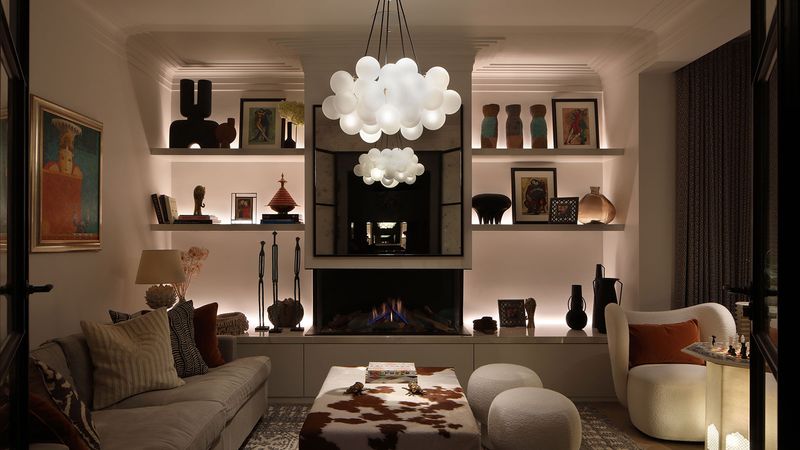
Relying on just one ceiling fixture creates shadows in corners that visually shrink your space. Dark areas read as boundaries rather than usable space.
Layer lighting with floor lamps, table lamps, and accent lights at different heights. Multiple light sources eliminate shadows and highlight room dimensions. Strategic lighting draws the eye around the room, revealing its true size.
9. Heavy Patterns
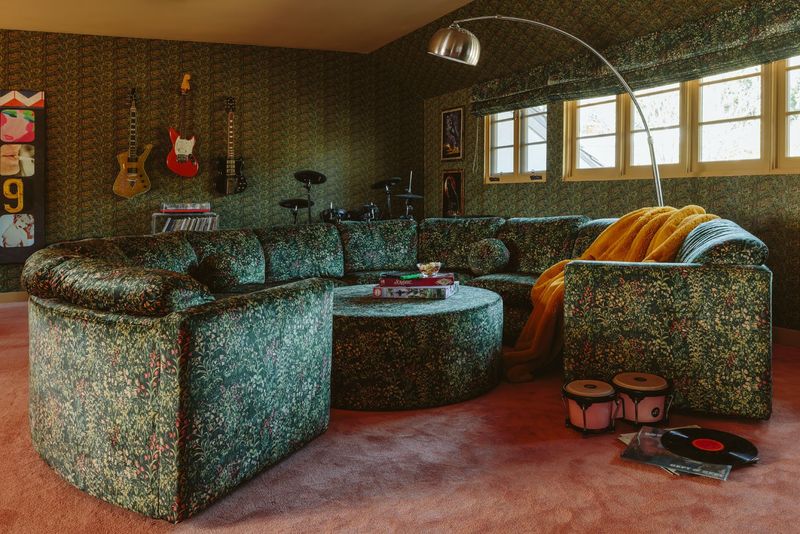
Bold, large-scale patterns on wallpaper, rugs, or upholstery can overwhelm a space visually. When patterns compete for attention, rooms feel busy and confined.
Balance is key with patterns. If you love that boldly patterned sofa, keep surrounding elements simple. Alternatively, incorporate patterns through smaller, easily changeable items like pillows or throws rather than major furniture pieces.
10. Improper Rug Size
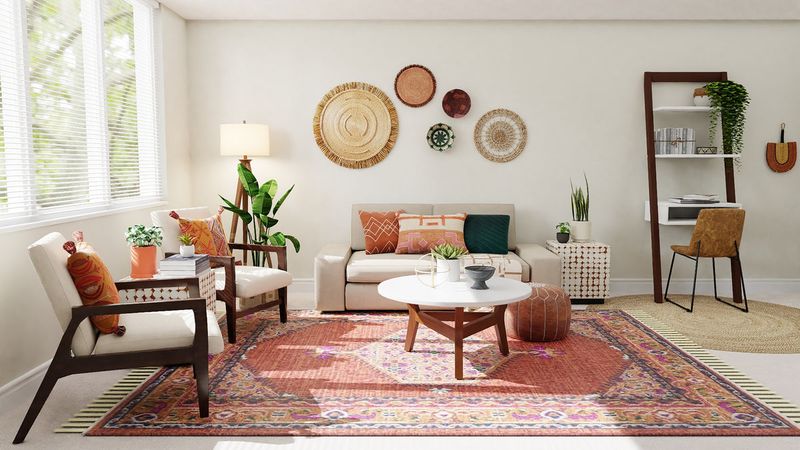
A postage stamp-sized area rug floating in the middle of your floor creates an island effect that fragments the space. Small rugs make rooms feel disjointed and smaller.
Proper rugs should be large enough that at least the front legs of all furniture sit on them. This creates a unified conversation area that feels purposeful and spacious, visually expanding the room’s dimensions rather than chopping it into sections.
11. Too Much Seating
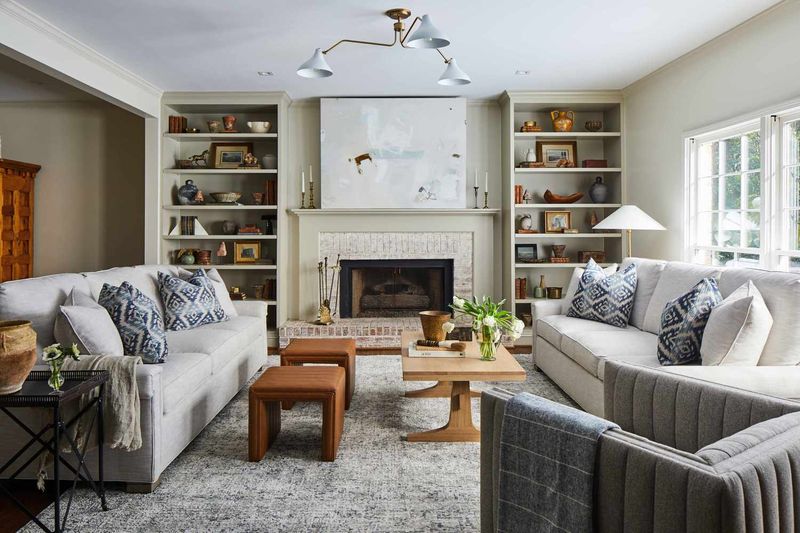
Cramming in extra chairs and ottomans for those twice-yearly gatherings creates daily navigation challenges. Overcrowded seating arrangements force awkward pathways through the room.
Focus on everyday needs with strategically placed multifunctional pieces. Nesting tables or stools that tuck away when not needed create flexibility without permanent crowding. Consider keeping occasional seating in another room until you actually need it.
12. Tall Furniture Blocking Views
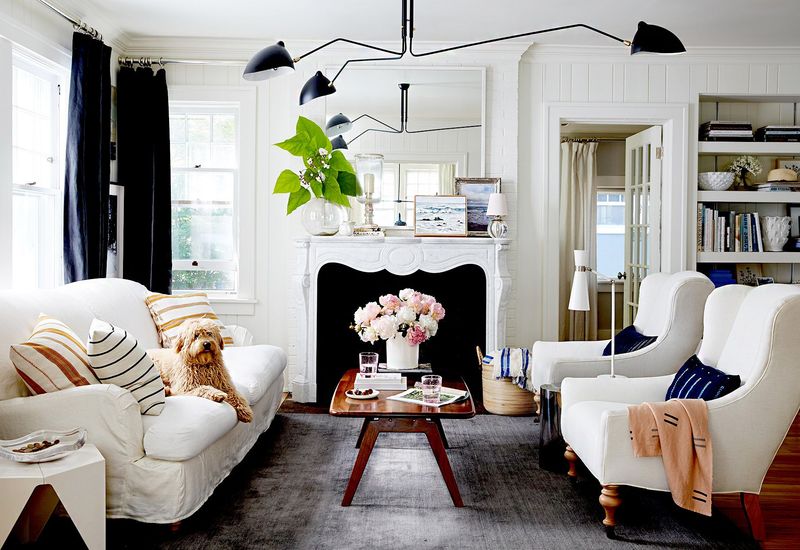
High-backed chairs and towering bookcases create visual barriers that chop up sight lines across your living space. When you can’t see through or around furniture, rooms feel compartmentalized.
Consider lower-profile furniture that allows the eye to travel freely. Arranging taller pieces against walls rather than floating them in the room creates uninterrupted views. This simple adjustment makes even modest rooms feel more expansive.
13. Busy Wall Art Displays
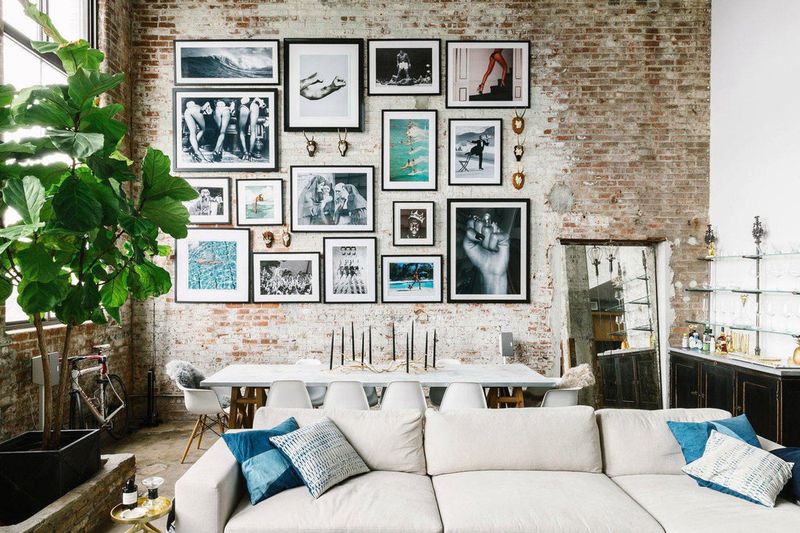
Gallery walls with dozens of small frames create visual confusion that makes walls feel like they’re closing in. The scattered arrangement forces the eye to dart around rather than rest.
Consider fewer, larger pieces that create impact without chaos. If you love gallery displays, create visual cohesion through matching frames or a clear arrangement pattern. Concentrated art with some empty wall space allows the room to breathe.
14. Awkward Furniture Layout
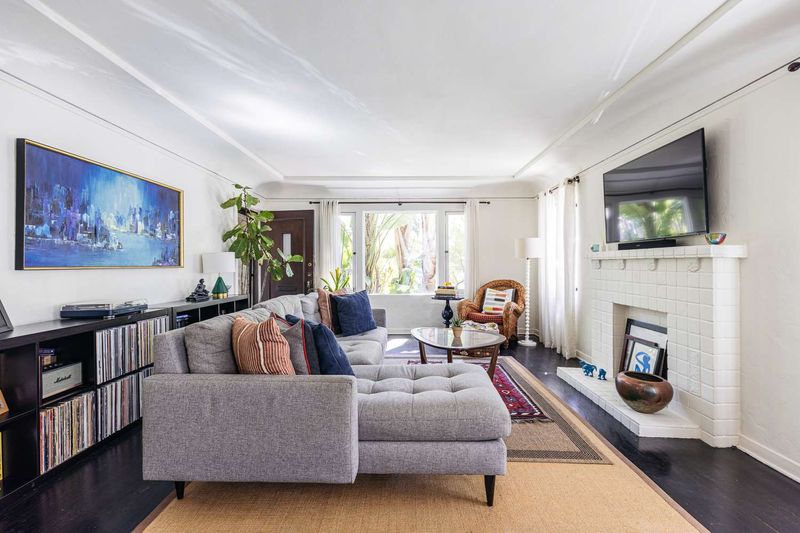
Pushing all furniture against walls creates a bowling alley effect that wastes the center while making the space feel stiff and uncomfortable. Furniture placement affects both function and perception.
Create conversation areas by floating some pieces away from walls. Angling select furniture pieces adds dynamic energy. Thoughtful arrangements that consider traffic flow and focal points make rooms feel purposefully designed rather than cramped.
15. Dark Paint Colors
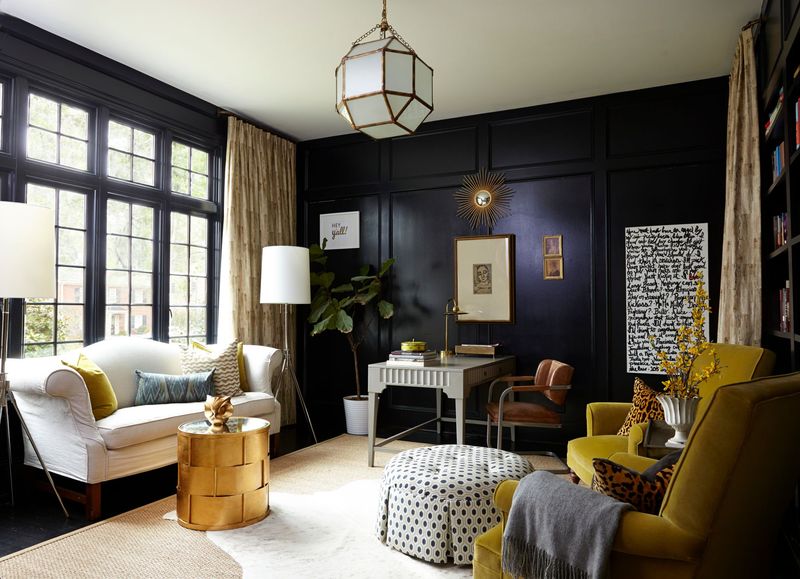
Those moody charcoal walls might be trendy, but they’re visually pushing your walls inward! Dark colors absorb light instead of reflecting it around the room.
Lighter paint shades create an expansive feeling by bouncing natural light throughout the space. If you love dark colors, consider using them on just one accent wall rather than the entire room.
16. Visible Cords And Electronics
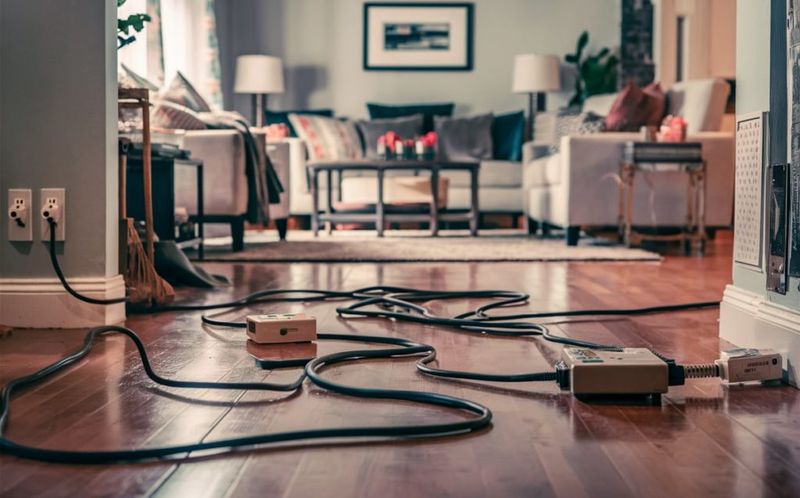
Tangled cables snaking across floors and surfaces create visual clutter that registers as mess even when everything else is tidy. Our brains process these lines as obstacles.
Invest in cord management solutions like cable covers or cord organizers. Consider furniture with built-in charging stations or hidden compartments for electronics. These small tweaks eliminate visual noise that makes rooms feel chaotic and constrained.
17. Collectibles Taking Over
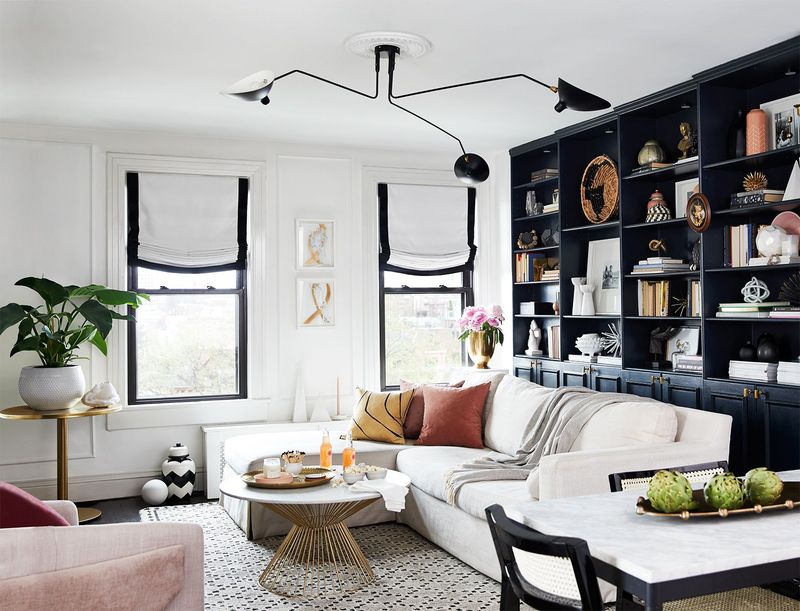
Your prized figurine collection might bring joy, but when displayed en masse, it creates visual weight that dominates the room. Collections demand attention from our brains, making other elements fade away.
Rotate collectibles seasonally instead of displaying everything at once. Consider dedicated display cabinets with doors to contain visual complexity. This approach lets you enjoy your treasures without letting them visually shrink your living space.
18. Ignoring Vertical Space
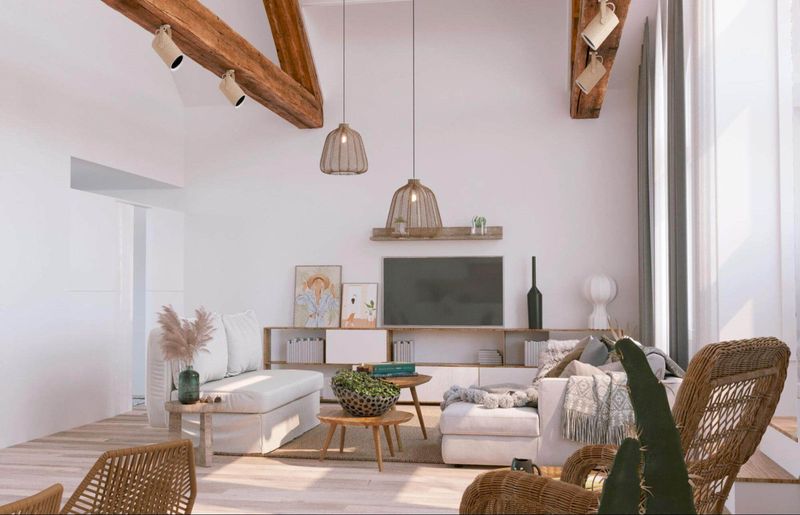
Focusing all design elements at eye level creates a horizontal band of visual interest that fails to draw the eye upward. This common mistake leaves valuable wall real estate unused.
Extend design elements toward the ceiling with tall bookshelves, high curtain rods, or vertical art arrangements. Drawing the gaze upward creates an impression of height and spaciousness. Plants with upward growth patterns can also help emphasize vertical dimensions.


